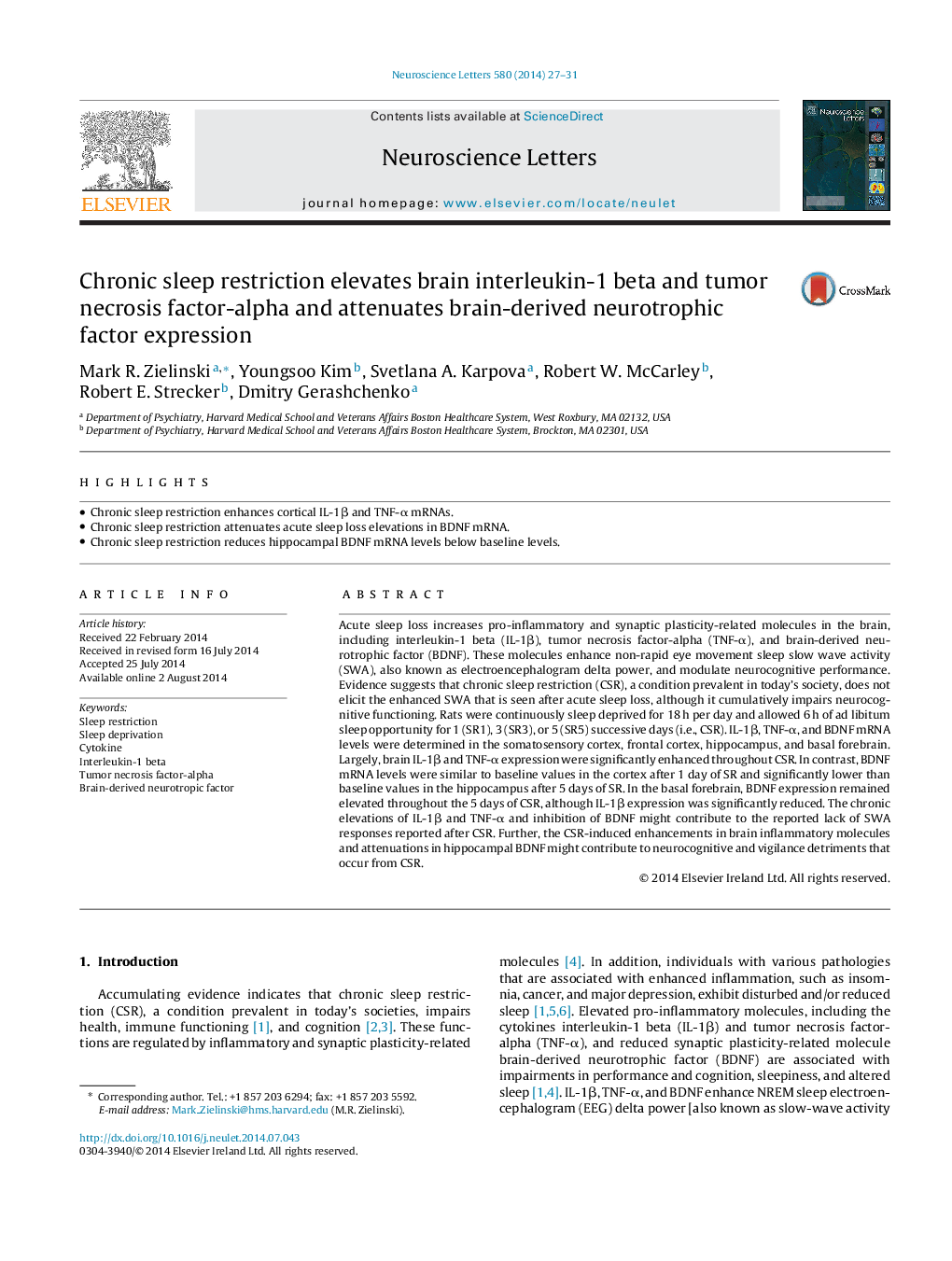| کد مقاله | کد نشریه | سال انتشار | مقاله انگلیسی | نسخه تمام متن |
|---|---|---|---|---|
| 4343608 | 1615119 | 2014 | 5 صفحه PDF | دانلود رایگان |
• Chronic sleep restriction enhances cortical IL-1β and TNF-α mRNAs.
• Chronic sleep restriction attenuates acute sleep loss elevations in BDNF mRNA.
• Chronic sleep restriction reduces hippocampal BDNF mRNA levels below baseline levels.
Acute sleep loss increases pro-inflammatory and synaptic plasticity-related molecules in the brain, including interleukin-1 beta (IL-1β), tumor necrosis factor-alpha (TNF-α), and brain-derived neurotrophic factor (BDNF). These molecules enhance non-rapid eye movement sleep slow wave activity (SWA), also known as electroencephalogram delta power, and modulate neurocognitive performance. Evidence suggests that chronic sleep restriction (CSR), a condition prevalent in today's society, does not elicit the enhanced SWA that is seen after acute sleep loss, although it cumulatively impairs neurocognitive functioning. Rats were continuously sleep deprived for 18 h per day and allowed 6 h of ad libitum sleep opportunity for 1 (SR1), 3 (SR3), or 5 (SR5) successive days (i.e., CSR). IL-1β, TNF-α, and BDNF mRNA levels were determined in the somatosensory cortex, frontal cortex, hippocampus, and basal forebrain. Largely, brain IL-1β and TNF-α expression were significantly enhanced throughout CSR. In contrast, BDNF mRNA levels were similar to baseline values in the cortex after 1 day of SR and significantly lower than baseline values in the hippocampus after 5 days of SR. In the basal forebrain, BDNF expression remained elevated throughout the 5 days of CSR, although IL-1β expression was significantly reduced. The chronic elevations of IL-1β and TNF-α and inhibition of BDNF might contribute to the reported lack of SWA responses reported after CSR. Further, the CSR-induced enhancements in brain inflammatory molecules and attenuations in hippocampal BDNF might contribute to neurocognitive and vigilance detriments that occur from CSR.
Journal: Neuroscience Letters - Volume 580, 19 September 2014, Pages 27–31
